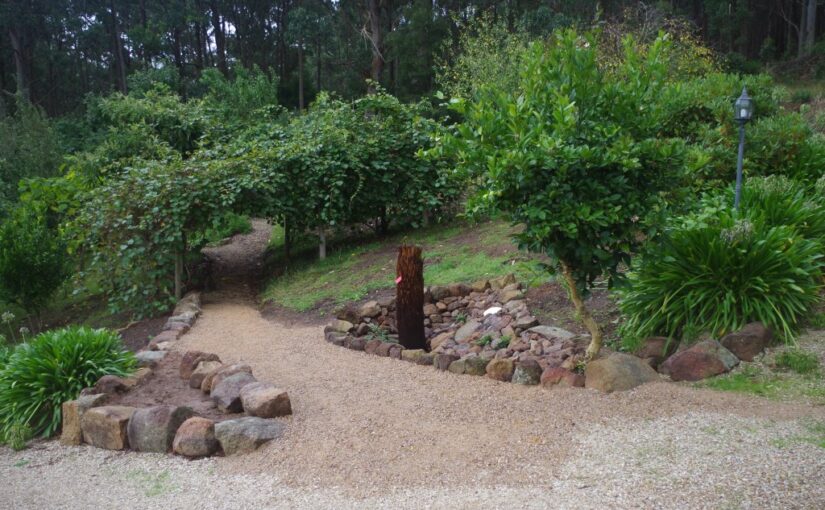Don’t you think it’s strange that the worlds major oil suppliers collectively decided to cut supply by 1.2 million barrels per day, and the news media treated the announcement as if these kind of things happen all the time? Except they don’t. Perhaps the news media didn’t quite get around to comprehending that any cut in supply means that someone is missing out, and prices are going to rise (economic scarcity). How could they not do so? The interactions of supply and demand in this instance are a bit of a bummer, and inflation is where it’s headed.
The Easter weather has been filthy. Really cold, miserable and wet. The ferns love it. Maybe the undead also wouldn’t notice. But us humans on the other hand, have been dodging the rain, getting soaked, and just generally working outside in less than fluffy optimal conditions.
On Thursday and Good Friday the clouds were so thick and low, that the solar power system recorded only a bit over an hours peak sunlight. The house batteries didn’t reach full charge on those days, and we had to curtail our energy usage. How people expect to charge energy hogs like full sized electric vehicles using this technology is something of a mystery to me. Maybe it’s just me pondering reality, but I dunno, maybe other folks just don’t think about it.
By Easter Saturday, weather conditions managed to get worse. We’d had enough, and decided to take the day off working around the property.
Sandra and I headed north that day to stock up on honey from an apiarist we trust. A few nefarious suppliers add in cheaper cane sugar syrup to bulk out their honey supplies, thus reducing costs – for them. Not this supplier though, they’re good. We discovered the substitution racket years ago when a batch of mead (honey wine) we produced, ended up being sickly sweet. Honey is 80% sugar, whilst sugar is 100% real sugar! Too much sugar in a wine, and the result is a disgustingly sweet headache inducing brew. Yep, turns out some nefarious suppliers mix sugar into their honey. Who’d have thought it? I tell you, it’s hard to detect too, unless you’re making mead, then you know. Most people wouldn’t have a clue.
The local shire council is promoting an autumn pie and tart trail. Such tasty treats are like catnip, so on our journey north through the area, we picked up a gourmet pie. The pie was Mexican inspired with refried beans, cheese, salsa and corn chips. It was pretty good, and we ate the pie in a delightful old courtyard under enormous old Chinese Elm trees. There’s worse things you can be doing, like hauling large rocks in the rain, or being hunted down by psychotic robots. That would be a bad thing.
The leaf change tourists are out and about in the area. They’re everywhere. There sure were a lot of people around that day. A lot of them were driving large vehicles too. Whilst my mouth savoured the tasty pie, the brain cogitated upon the economics of leaf change tourism. Probably brings a lot of mad cash into the area, but how do the local businesses manage their staff levels, stock and systems so as to cope with the occasional massed hordes of tourists? Looks stressful and unpredictable to me. And if there is so much economic distress out there in the community, how do all these people afford to travel up into the bush to see the exotic deciduous trees losing their leaves? Are they bored or something?
After the delightful pies, we continued our journey north. To avoid the crowded freeway, we took the back roads which are more pleasant and traverse rural landscapes. It was quiet and pleasant, and there are always interesting things to see. The journey incidentally, might sound like a long way, but in reality the honey supplier is about an hours drive north of here. It’s nice to take the time to look around and see the land. On the freeway, all you see is the road and other cars.
We’re slow travellers, we look around. Many of the inland towns around here have botanical gardens dating back to the gold rush era. A lot can happen in a 170 years, and the gardens usually have a lovely established look to them. That rainy day we stopped to have a walk around two botanical gardens. There’s fortunately few, if any tourists in the botanical gardens despite the exotic deciduous trees. The garden closest to here is more of what I’d imagine an English park would look like. A little lake with a fountain, oaks, elms, willows, poplars, ducks and geese. It’s really quite an enchanting place to be, even on a wet and cold day. During the hot summer months, the shade from the established tree canopy is soothing.
The second, more distant botanical garden we visited also has a little lake as well as it’s fair share of oaks too (including a couple of old cork oaks). But it’s different. The grass is manicured and the flower beds are superb, but it’s less Pre-Raphaelite whimsy, and a bit more of an arboretum. However, both are enjoyable places to spend time in.
What was messed up though, was that we spotted two blokes who’d looked like they’d set up camp in the more distant botanical garden, and were possibly living rough. You hear historical stories of people living rough in rural areas like the swagman of old, but I’d never expected to see homelessness in an inland rural town. I’ve not seen it before and it certainly means something. Living out of the big city is meant to be cheaper, but somehow it isn’t. Houses are in short supply. A large house builder went into liquidation last week and prices are rising due to inflation. More people are being brought into the country each year, which lowers wages and increases pressure on housing supply. And there’s two dudes living rough in a country botanical garden. I dunno, given how things are working out, maybe a psychotic robot or the undead would do a better job managing the competing societal pressures? Whatever the case may be, it sure is messed up though.
With persistent rain in the forecast for Easter, a delivery of crushed rock with lime was organised the previous week. The material makes for a good all weather surface. Over the past few days, we’ve spread the material over the clay surface of some of the recent projects. The surface of the new flat site in front of the large shed has now been entirely covered in a layer of the crushed rock.

The flat site is quite expansive, and will be very useful. During the week, the ramp leading down onto the flat site was excavated and shaped. Compared to the previous arrangement, it’s really smooth.
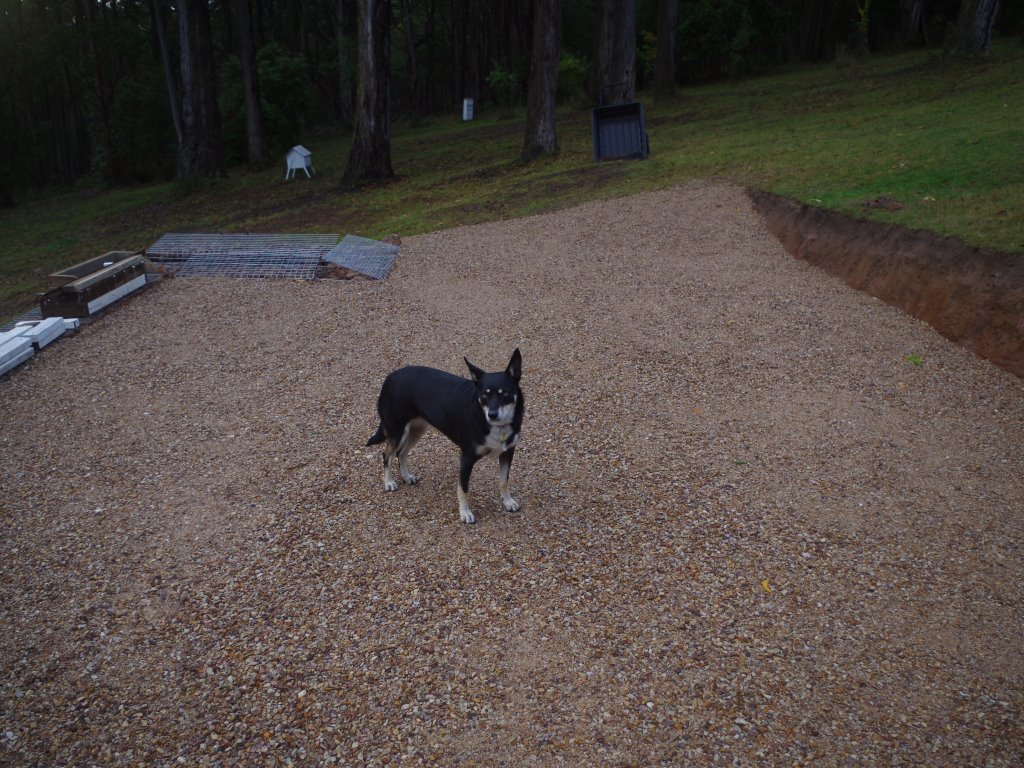
Work also continued on the new low gradient path leading down into the shady orchard. More large rocks were hauled into the area, and it’s now clear where the new triangular shaped succulent garden bed will be.
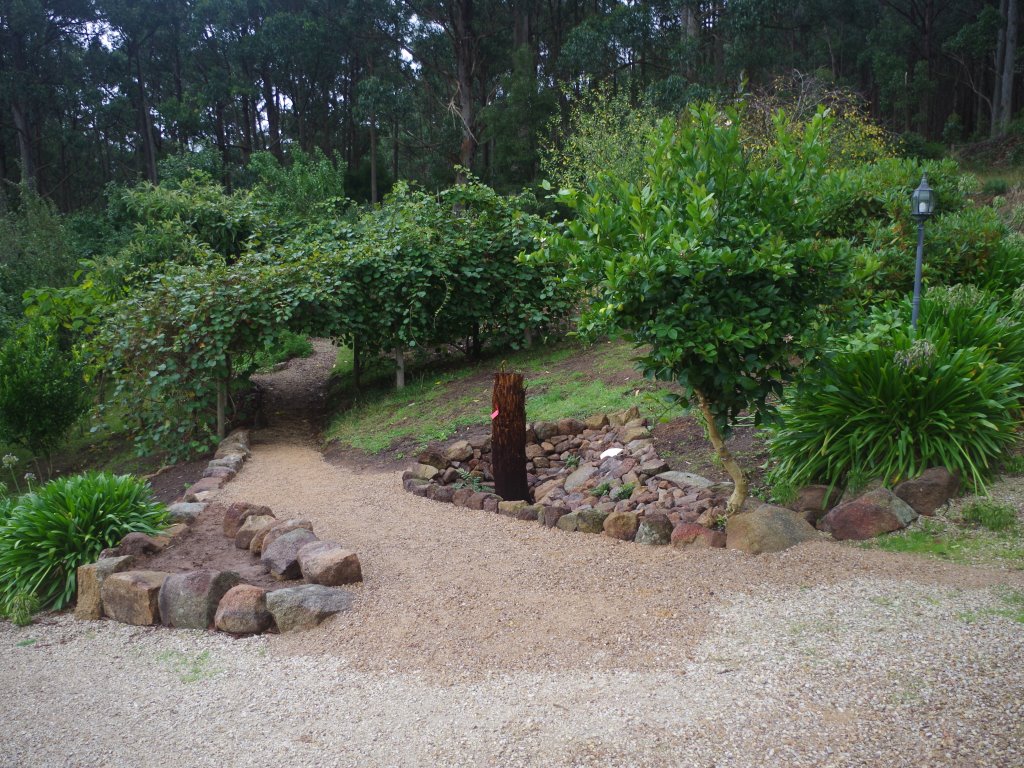
Most of the rain which has fallen over Easter could be described as persistent drizzle. However, occasionally the rain has been torrential and that proved to be a good test of the new drainage basin which can be seen in the above photo. The basin collects all of the rainfall which falls onto the driveway and in front of the house. During a big storm, that’s a lot of water. And the system just has to work under all conditions including the very worst.

The soil levels in the drainage basin are spot on. Water collects at the lowest point of the basin where there is a large tree fern planted. Those plants happily grow in seasonal creeks where their root systems work to hold the soil together against the water pressure. The flow of water into the basin mimics a natural process. Excess water exits the basin via the large 300mm / 1 foot diameter PVC pipe which runs under the path. As can be seen in the above photo, the system just works with no further input on my part. And over the years I expect the system to become more resilient as the plants root systems establish themselves.
The large old tree fern which was planted out last week, is clearly enjoying the conditions. One frond is in the process of unfurling, whilst two others have begun the process.
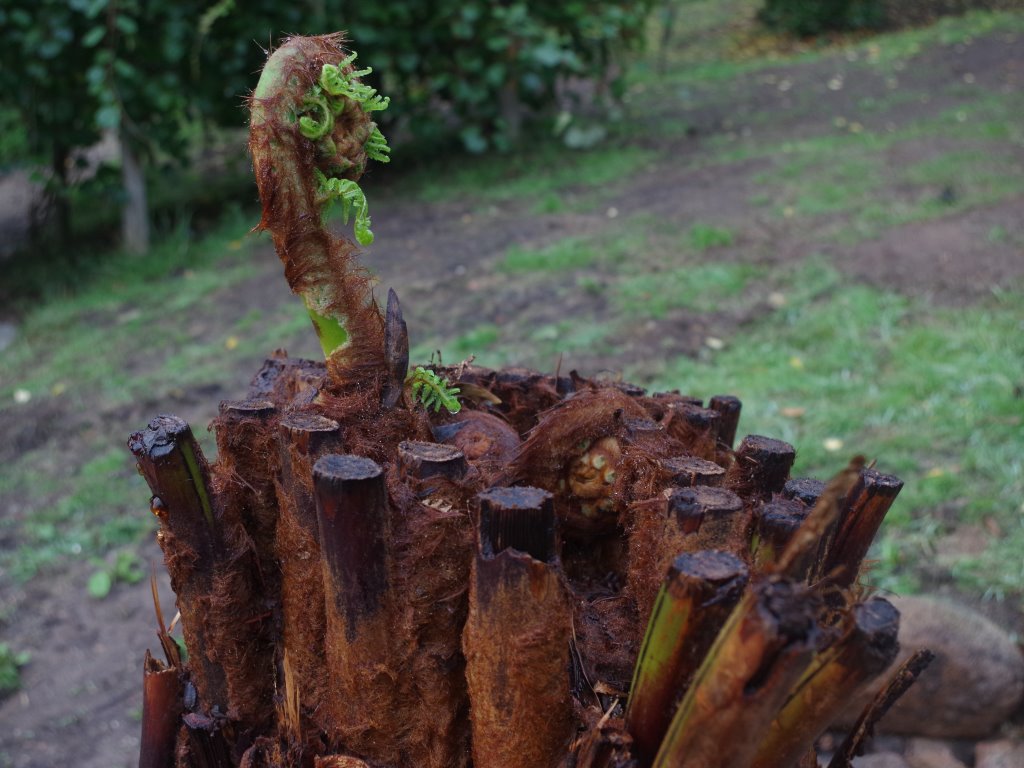
With persistent Easter rain in the forecast, we decided earlier in the week to move some Mediterranean fruit trees to locations which are sunnier than where the trees were originally planted. Three olives, a Loquat and a Fig were moved to the sunniest locations on the farm. Two of the olive trees were massive, at well over ten foot. Undaunted by the size, we moved them.

The growing season is rapidly nearing an end, so we decided to pull up all of the pumpkin plants and harvest all of the fruit. The growing season has been short, cold and wet, but we have a good supply of pumpkins to get us through the winter months. The sapling fence enclosure now only has a few struggling tomato plants, and I doubt they’ll survive the cold conditions for much longer.
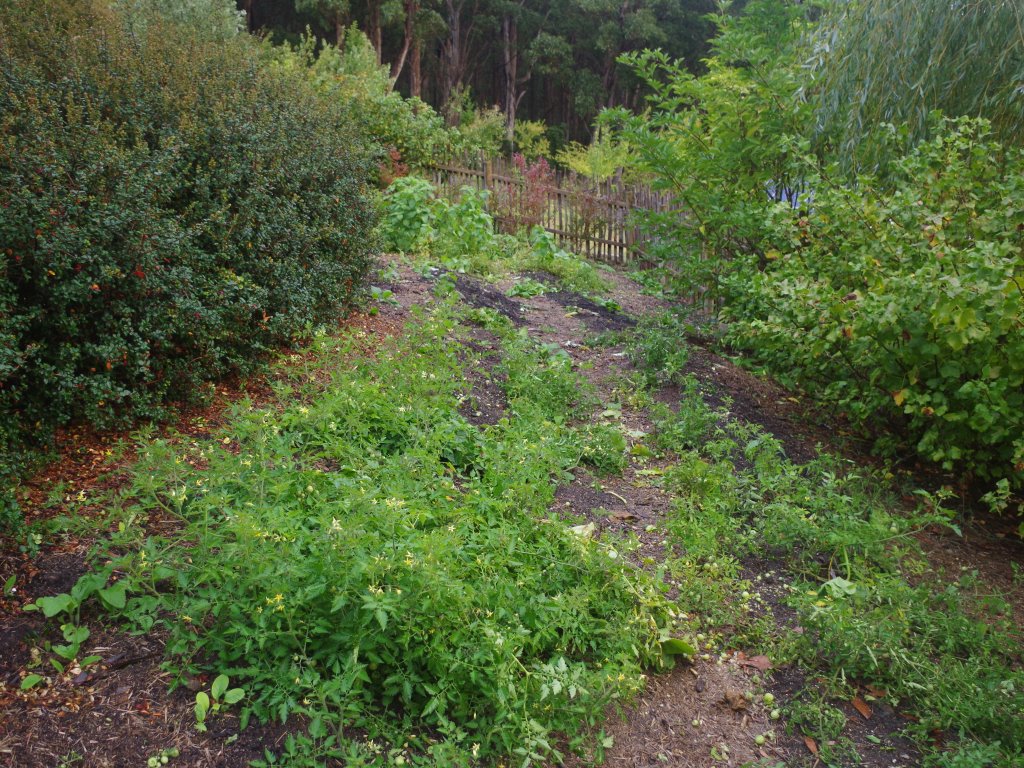
With the recent turn to colder and wetter conditions, I was rather surprised that the grape harvest became tastier. This is the first year that the ten vines have produced a decent crop.
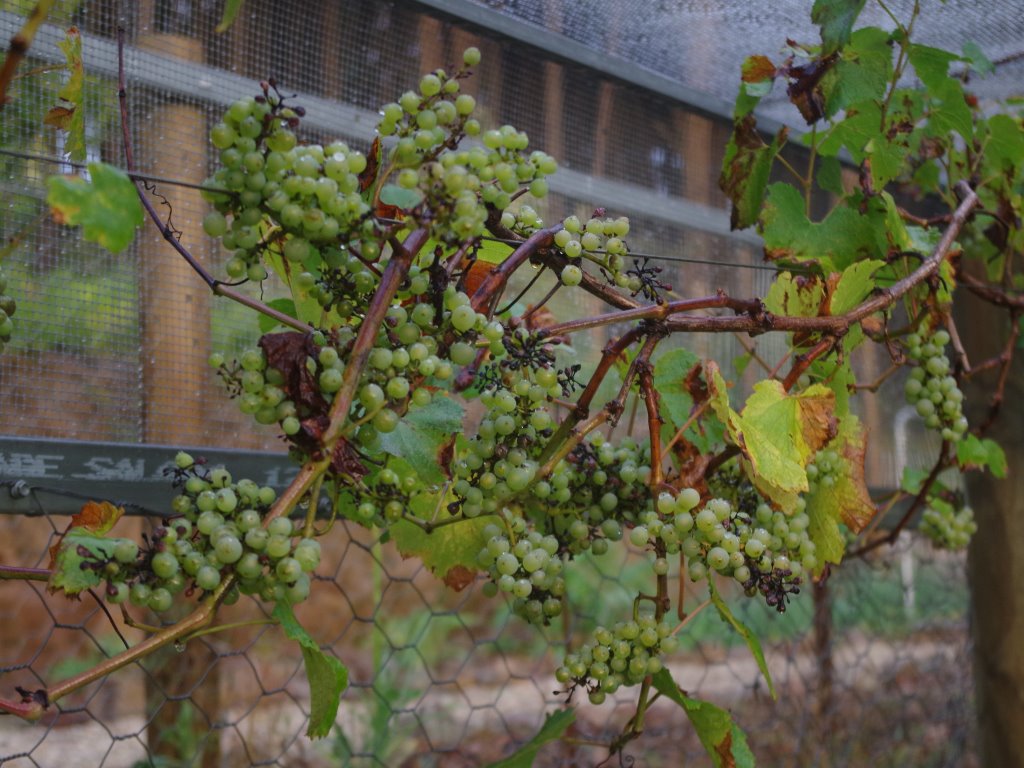
We planted out ten different grape vines in the enclosure, and they are all useful for either wine making or table grapes. And they’re far better tasting than I’d ever imagined.
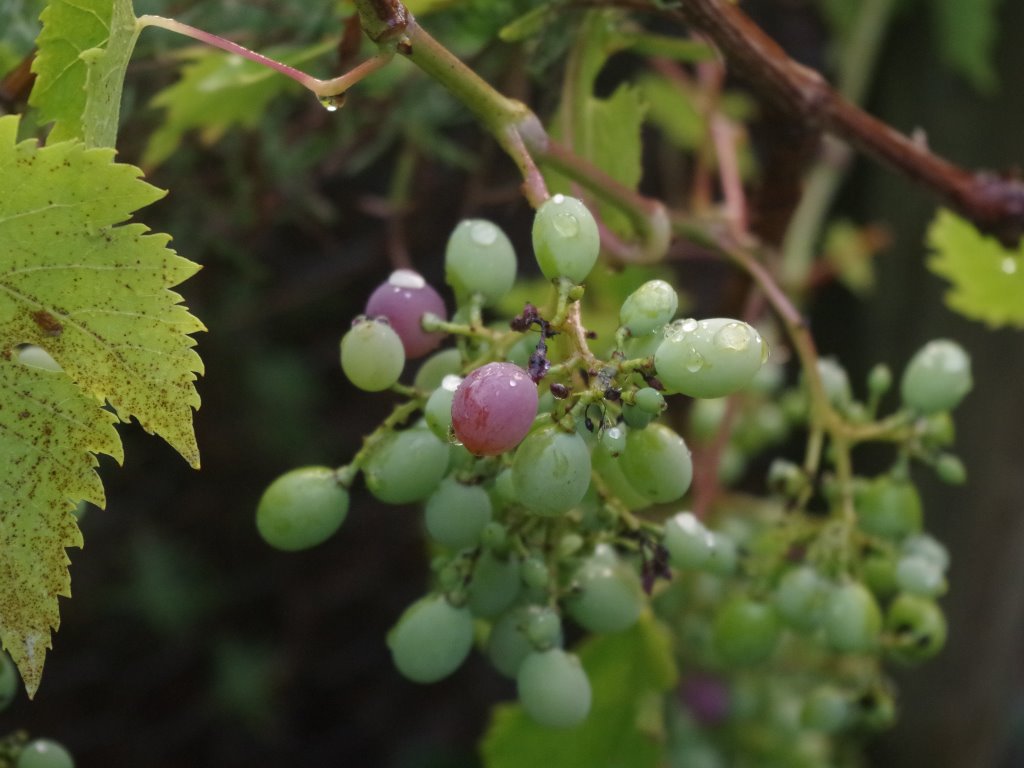
Near to the head of the drainage basin grows a decade old Meyer Lemon tree. A few years ago I was concerned that the tree had succumbed to a fungus. With that in mind, I cleared all of the competing growth away from the citrus trees trunk, coated the surrounding soil with agricultural lime, then took off all but the healthiest branches – which only left one or two branches on the tree. The tree looked very sad indeed, and the prognosis for a full recovery was not good. But the tree has since bounced back, and is now laden with lemons. The lemons are beginning to ripen. We harvest the fruit and freeze the juice which is useful for preserving and cooking.

Onto the flowers:
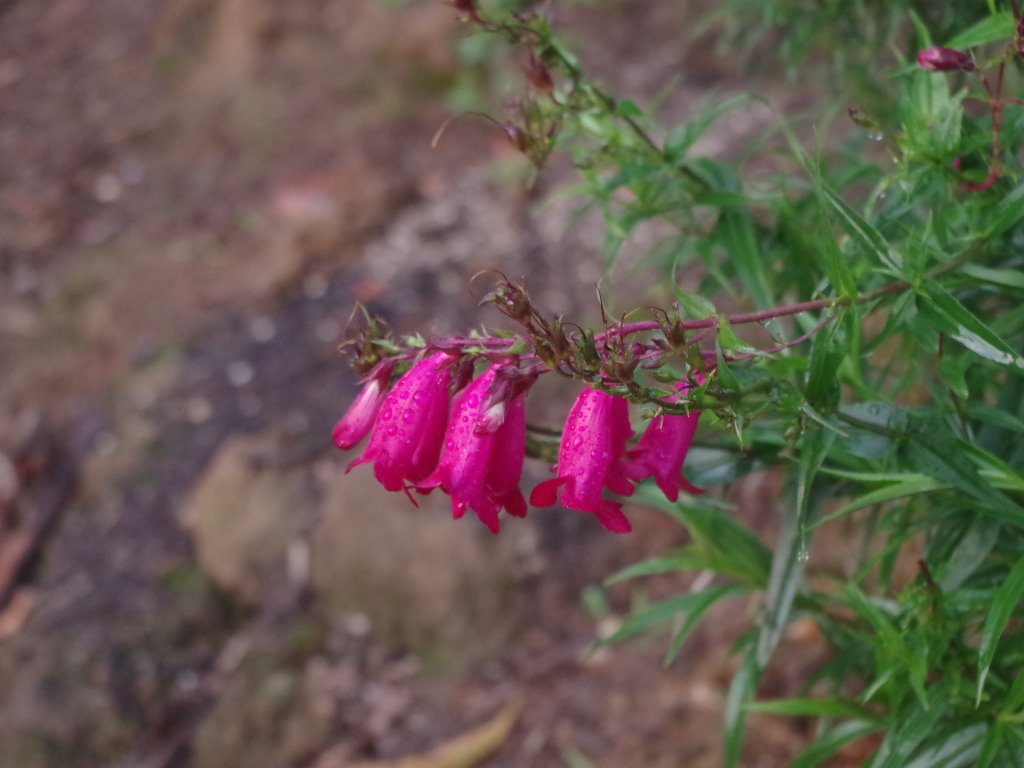
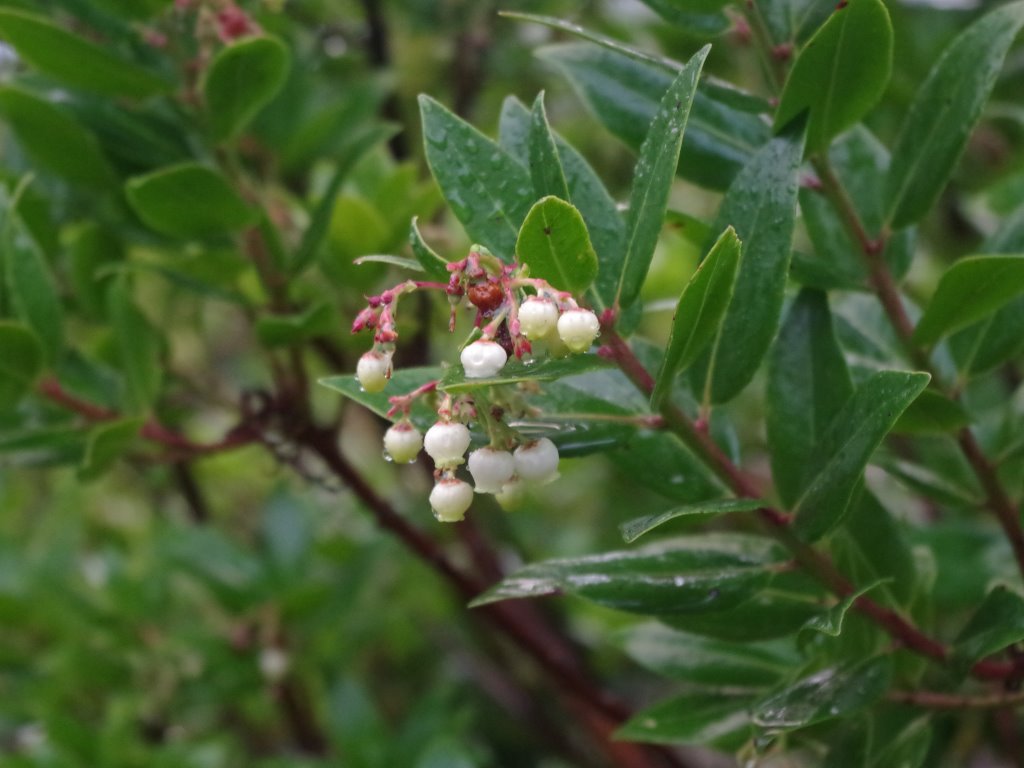
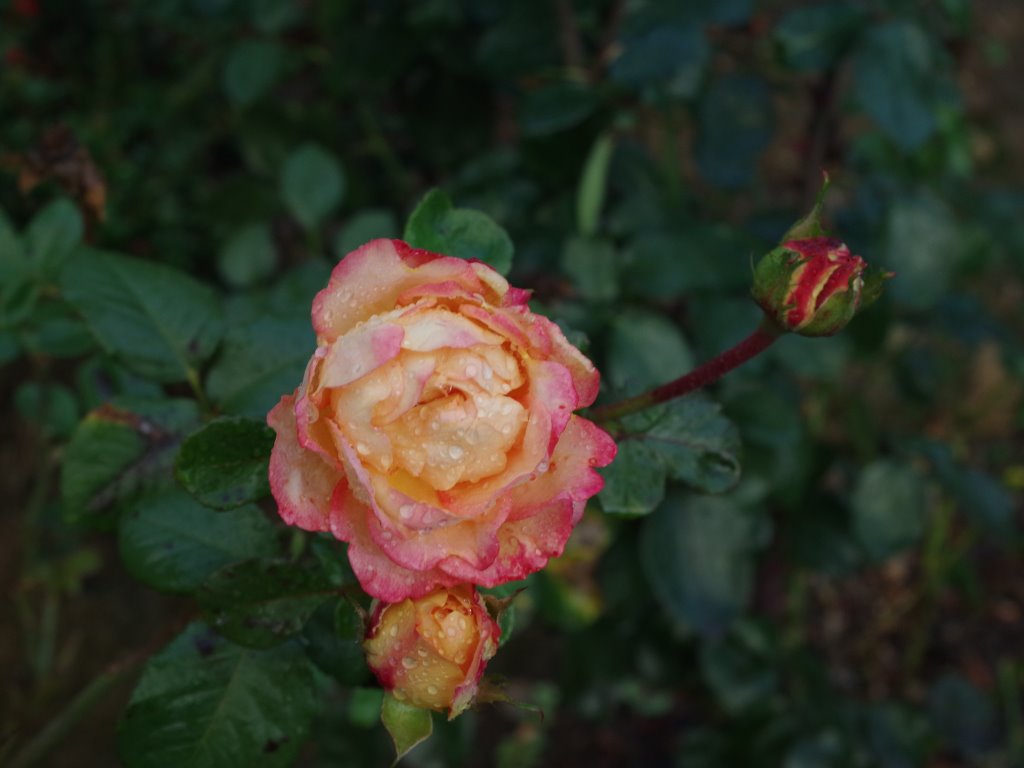

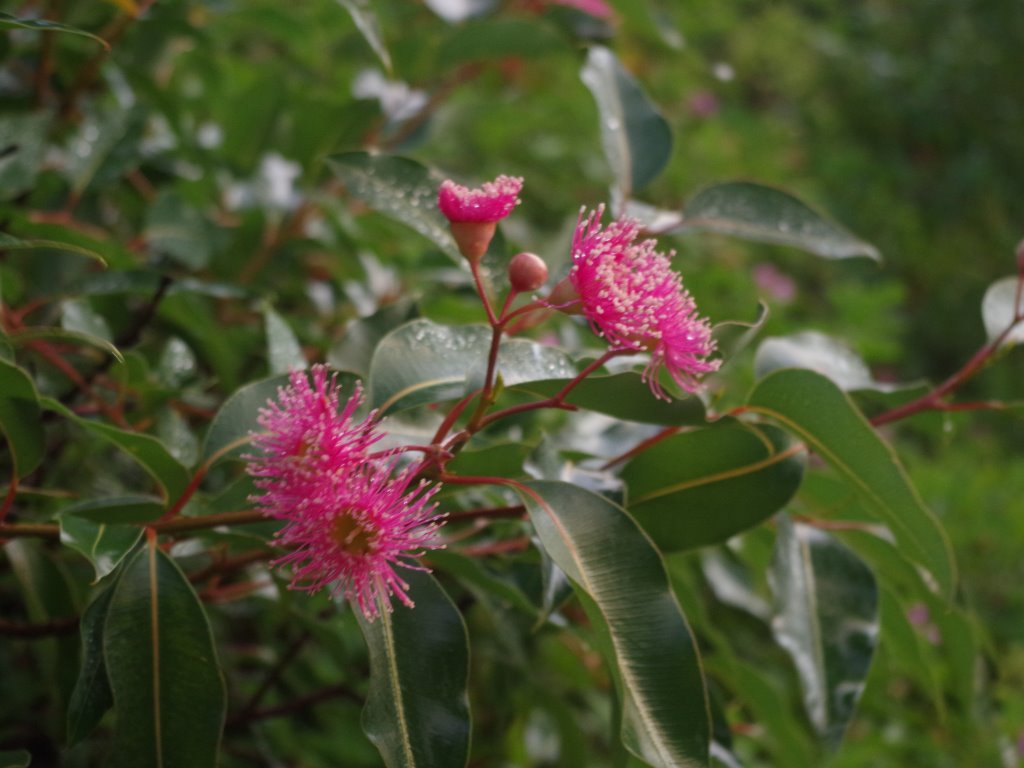
The temperature outside now at about 9am is 7’C (45’F). So far this year there has been 196.4mm (7.7 inches) which is up from last weeks total of 157.6mm (6.2 inches)
